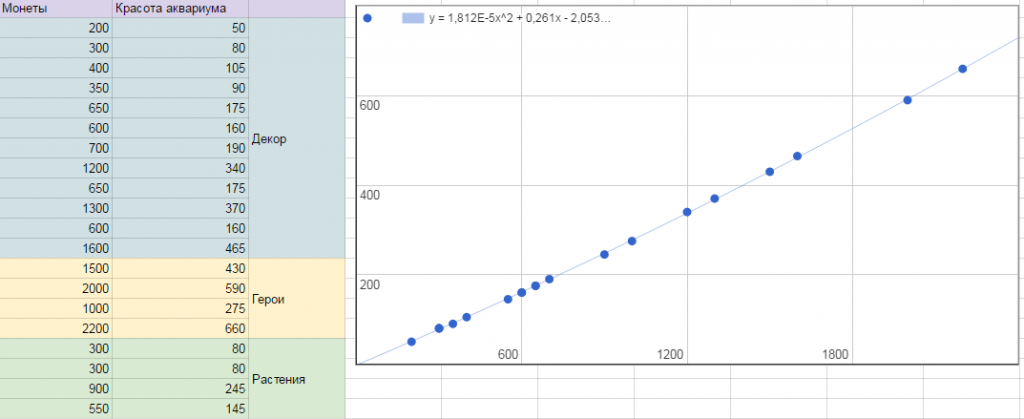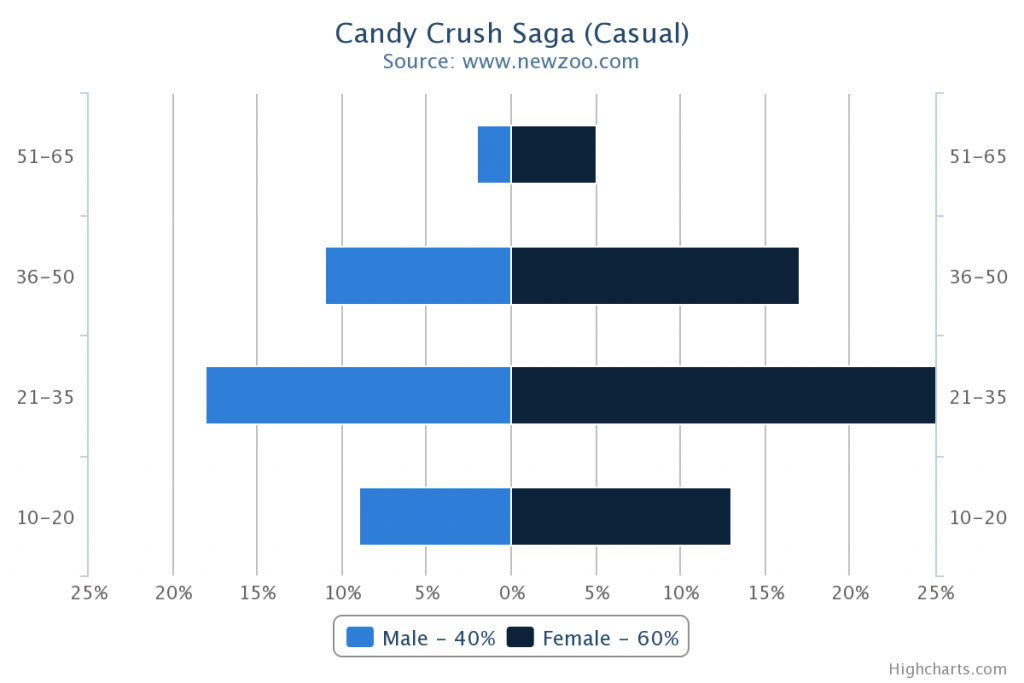Deconstruction of Fishdom
Fishdom as the title is not a couple of months old as you may infer looking at the official release dates of Fishdom: Deep Dive on App Store and Google Play (December 2015 and February 2016, respectively). The first game under this title was released in 2008. Since then the World witnessed the release of at least eight projects with the similar name on PC alone with only three numbered parts among them. The mobile Deep Dive is a free-to-play adaptation of the latest title – Fishdom 3, released on PC in June 2014.

It is a tough mission to evaluate the success of the franchise on the PC casual market, where it was present until recently. The sales figures of the most popular marketplaces in this segment (BigFishGames in the West, Nevosoft and Alawar in Russia) are not publicly available. But, given that the original title was in 2009 recognized as one of the bestsellers on AOL, BigPond and BigFish, and its conversion rate reached 14% – we may assume that even the first part was generating good revenue.
The desire of the company to transfer its success to the mobile platform can be easily understood. However, the title’s path to the mobile market has been long and difficult. Just for iOS Playrix released about 30 (!) versions of Fishdom. As a rule, these were freemium-projects (essentially demo versions: you reach a certain point in the game, stop, buy a full version). Not one of them could be found among grossing hits or downloads leaders.
Most of these titles Playrix later removed from the app stores in 2015 getting ready for the Global release of free-to-play Deep Dive.

Multiple “ghosts” of other games of Fishdom brand
Game cycle
The distinctive feature of all parts of the franchise is that their gameplay is a mix of the traditional PC widescreen match-three with such genres as a builder and virtual pet simulator (a la Tamagotchi).
The same goes to Deep Dive.
The player in the project manages a virtual fish tank. This housekeeping requires soft currency spending to be replenished on match-three levels. The more items you build and decorate in the tanks, the more fishes you have, the cooler is the fish tank (more stars awarded). A higher ranking of the latter grants the player access to a new fish tank, which is also prone to further upgrades. The more stars you have, the more gold you gain from arcade levels.
Each star gives a raise of 20 coins. For example, if you have one tank with one star, then you are awarded 20 coins for each level as a bonus. In case you have three aquariums with three stars each, you will get 180 extra coins for each successfully completed level.
We are dealing with an original cycle here, where you get soft currency for gameplay, which is spent to gain even more currency from the gameplay.
But construction, decoration and fish itself, not to mention the new aquariums, does not affect the core gameplay. All these items do not give you bonuses neither do they speed up the life generation timer.

“Building stuff” is a part of the game but without obvious benefits for the player
Core gameplay
The core gameplay, as we have already noted before, is a standard widescreen match-three (a la Cradle of Empires).
In order to complete each level, you need to complete some tasks. It can be a destruction of certain items or collection of all the gold from the level, or something else.
Upon entering a level the player can choose bonuses that will appear on the field once the game starts. Theoretically, it gives a certain edge to the player.
The bonuses that the player can pick on the field while destructing the predefined number of items, always appear as bombs. They are different only in the radius of demolition. A firecracker can only reach adjacent cells and a dynamite ‘covers’ a much wider area.
The lack of variations in item demolition scenario only simplifies the life of a casual player: he knows that no matter what bonus he picks, the principle of his actions will remain.
When a bonus explodes, the player collects yet another one – a lightning, which destroys all gems of selected color. Once the progress bar is filled, it appears on the field in a random location.
Also, the game features another power up – the hammer. It destroys one gem or obstacle. You can move gems on the field while other gems are falling. This feature is made for time-sensitive levels. You can move gems to empty cells in the game (swap with empty). A player receives coins for each level based on the value of the level, saved moves bonus and star-related bonus.

It is rather challenging to match gems on a small screen with 11×9 field format
Meta gameplay
In the meta, the player does the housekeeping around the aquarium. This happens with the help of four types of items: fish, decorations, characters and plants. Each item has a price and a ‘beauty’ index that it gives to a fish tank.
The aquarium’s beauty is reflected on a special scale. Once the scale tops its maximum, the aquarium gains a star. The maximum number of stars of each aquarium is three.
Despite the fact that we have only four types of items, they are not different from each other functionally. With one exception – the fish. You can name them, feed them, and their number is limited to nine per fish tank (if a player wants more fish, he needs to pump it up to the next aquarium).
You cannot buy all the items at once. The access to them opens as you pass the levels. You are also unable to buy them for real money (in-game hard currency does not convert into soft currency required to buy game items).
The cost of decoration and beauty figures have power dependence in the first approximation (in the zero approximation it’s linear):

The game does not feature a level map or any replay features.
Monetization
The main type of the game’s monetization is through a sale of boosters, power-ups and lives requiring only hard currency.
The game also offers some special deals for purchasing hard currency. As a rule, such offers are limited in time.
Once the player runs out of moves, he is able to buy additional moves for hard currency.
If a level still remains incomplete successfully, the player will be able to buy extra moves again but this time coupled with a bonus that would cost extra.
After several such attempts not leading to successful completion of a session, the player will eventually start paying, since the number of bonuses to moves increases and a significant amount of currency had been already spent with the level still incomplete.
If a player could not complete a level several times in a row (regardless if he had paid or not), the game will suggest to buy a bonus and continue playing.
You can get crystals by watching ads. The catch here is that the player never knows what he would get for watching an ad: gold or a few crystals.

All the fish (and the loyal hero’s satellite – the Turtle) in the game are 3D
Target Audience
Players similar to the audience of Candy Crush Saga. Primarily female players over 18.

Well, here we also wanted to pay your attention to the tools Playrix is using while working with its audience. We are pinpointing these tools based on the theory of Jesse Schell, CEO of Schell Games. According to his theory, there are five game components that attract women: emotions, real settings, care, dialogs and word puzzles as well as learning by example.
In Fishdom, you have all of these. The emotions you get from funny characters (the Turtle and fish). Aquarium is very close to a real setting, though somewhat cartoonish. You are able (even though it is not compulsory) care about pet animals (feed them). The characters often talk and make jokes with the player thus crushing the “fourth wall”. Plus, there is still a detailed tutorial to learn from.
In other words, we are talking a 100% target audience hit.
Summary
As of the moment of publishing this article (July, 8, 2016) the iPad version of the game was in the ‘Highest Grossing’ Top 100 of 110 countries including Russia, Great Britain, Germany and the USA. In Google Play the games also demonstrate good numbers by entering paid Top 100 in 89 regions.